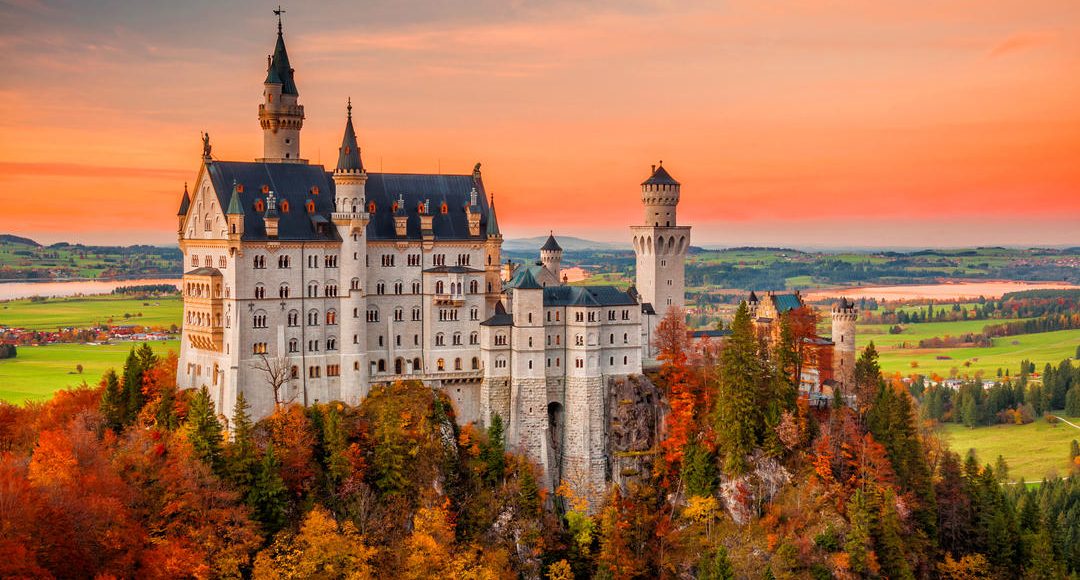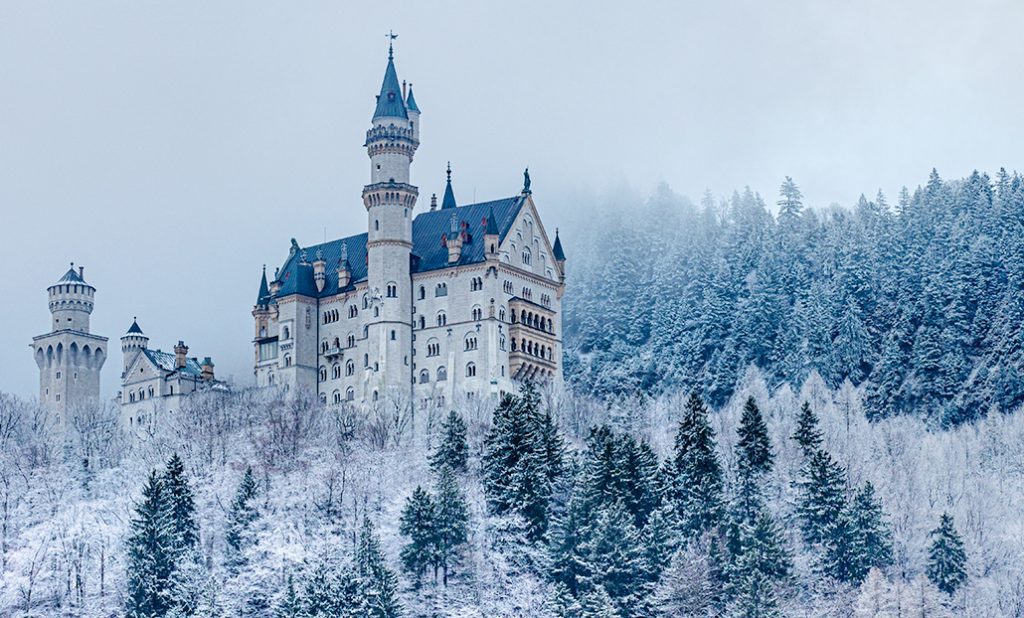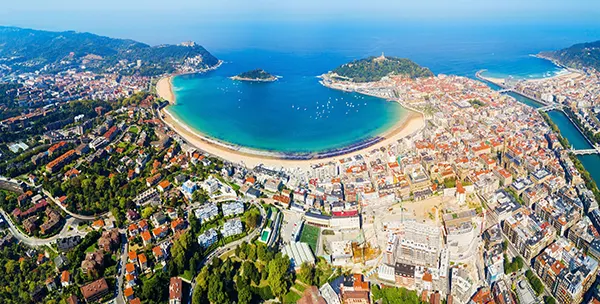
Neuschwanstein Castle: Embracing the Majesty of a Fairy Tale Etched in Stone
When one dreams of fairy tale castles, their imagination might conjure up something remarkably similar to Neuschwanstein Castle. Nestled among the Bavarian Alps’ picturesque landscapes, this architectural marvel has been charming visitors for over a century. Beyond its breathtaking exterior, the castle has a captivating story and a myriad of enchanting interiors that promise a journey through time and fantasy.
Story
Commissioned by King Ludwig II of Bavaria, Neuschwanstein Castle was a retreat and an homage to Richard Wagner, the King’s favorite composer. The castle was constructed between 1869 and 1886, during a time when castles no longer had strategic and defensive purposes, and could purely be works of romanticism and aesthetic allure.
Neuschwanstein – Castle of the Swan Knight
The name ‘Neuschwanstein’ translates to “New Swan Stone,” inspired by the character of the Swan Knight in Wagner’s operas. The castle indeed reflects the poetic grandeur associated with this character. With its ivory towers piercing the Bavarian skies and its position over the picturesque Hohenschwangau valley, the Neuschwanstein castle paints a picture straight out of a Wagnerian opera.
Throne Room
One of the highlights of Neuschwanstein is its Throne Room, a majestic space designed to resemble a Byzantine church. However, it lacks a throne, as Ludwig II passed away before it could be completed. The room is adorned with wall paintings depicting scenes from the religious king’s favorite holy sagas, contributing to the space’s sanctified feel.
Singing Hall
Further capturing Ludwig II’s deep admiration for Wagner’s operas, the Singing Hall, located in the eastern, major section of the palace, was designed for staging court concerts. The hall is adorned with scenes from medieval legends, again illustrating the King’s inclination towards romantic idealism. The acoustic properties of the Singing Hall make it a noteworthy marvel within the castle.

Royal Chambers
The royal chambers within Neuschwanstein provide an intimate glimpse into King Ludwig II’s personal life. His bedroom, featuring intricate wood carvings inspired by the Tristan and Isolde saga, is a testament to the skilled craftsmanship of the time. The adjoining study room, where the King spent much of his time, is adorned with frescoes illustrating scenes from the opera ‘Tannhäuser.’
Neuschwanstein – A Fairy Tale with a Sad Ending
Despite its ethereal beauty, Neuschwanstein is marked by a melancholic history. King Ludwig II, the mastermind behind the castle, was declared mentally unfit to rule just days before his mysterious death in 1886. He lived in the castle for only 172 days, and after his death, the castle was opened to the public to recover the construction costs, deviating from its initial intention of being a private retreat.
Interiors and Decor
The interiors of Neuschwanstein are as stunning as its monumental exterior, marked by the King’s love for opulence. Stained glass windows, intricate murals, and ornate chandeliers adorn the rooms. There’s an ongoing theme of swans throughout the castle, found in door handles, frescoes, and more, symbolizing purity and serving as a coat of arms for the Counts of Schwangau.
Neighborhood of Neuschwanstein
The area surrounding Neuschwanstein is a paradise for nature lovers. The castle overlooks the Alpsee Lake, offering awe-inspiring views. Nearby, the Hohenschwangau Castle, the Marien Bridge spanning the Pollat Gorge, and the charming town of Füssen are additional attractions that make a visit to this region rewarding.
In conclusion, Neuschwanstein Castle, with its tragic history, grand architecture, and dreamy surroundings, is more than just a monument; it’s a journey into a romantic past. It’s no wonder that it continues to fascinate and lure millions of visitors each year, standing as a symbol of architectural ambition and the unfettered dreams of a fairy-tale king.
Popular articles
-
 Big Ben and the Elizabeth Tower in London: History, Restoration, and V...
Big Ben and the Elizabeth Tower in London: History, Restoration, and V...Few landmarks define London’s identity as powerfully as Big Ben …
-
 San Sebastián, Spain — The Gastronomic Capital of Europe on the Bay of...
San Sebastián, Spain — The Gastronomic Capital of Europe on the Bay of...San Sebastián, also known as Donostia in the Basque language, …
-
 Pakse and the Bolaven Plateau, Southern Laos — Tea Plantations, Waterf...
Pakse and the Bolaven Plateau, Southern Laos — Tea Plantations, Waterf...Pakse and the Bolaven Plateau form a remarkable region in …
